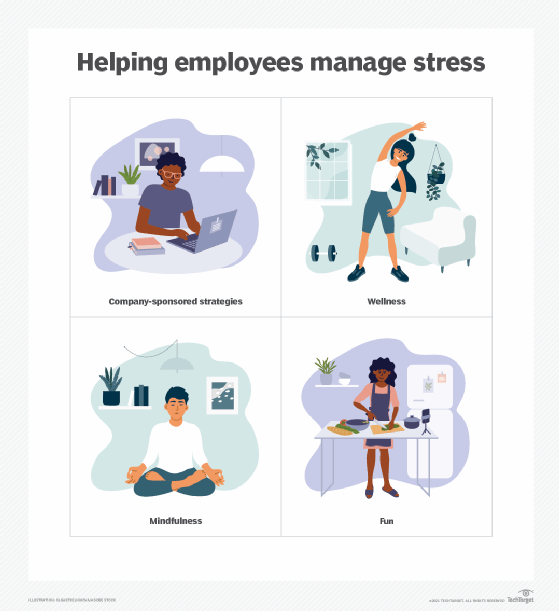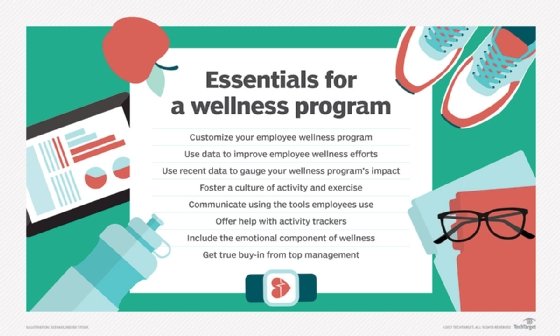7 strategies to ease employee return-to-office anxiety (original) (raw)
As companies invite employees back to the office, return-to-office anxiety among employees is increasing. With the right communication and guidelines, businesses can create a welcoming and safe environment.
When the COVID-19 pandemic first began, it took time for employees to adjust to working remotely full time. Asking employees to change routines once again can bring a new level of stress and anxiety. In some cases, employees may push back on returning to the office. For example, Apple's director of machine learning quit over the company's return to office policy.
Organizations should listen to employee concerns as they plan for a return to the office. Here are some strategies to keep in mind when creating these policies to help employees feel comfortable in an office environment once again.
1. Communicate plans early and often
If there is a set date for employees to return, let them know immediately -- even if details are not complete. By communicating early, employees can carefully plan for childcare, routines and transportation. Be sure to update employees as details are finalized.
Asking employees to change routines once again can bring a new level of stress and anxiety.
Employees need and want to know why they should return to the office. Organizations should outline these reasons for employees, which includes describing how returning to the office may affect work schedule and job expectations. This will promote honesty and transparency.
Businesses should also provide a way for employees to communicate if they have any questions. This includes a contact person or an email address to show leaders are willing to have conversations with employees.
2. Offer tools and resources to cope with anxiety
Businesses can help employees with anxiety by educating them about stress, coping strategies, anxiety and panic attacks. Employees may not tell people when they feel anxious, so give them the tools they need at their desks.
Tools such as simple breathing exercises, meditation time and other wellness resources and apps can help employees work through these attacks and communicate their anxiety with managers and co-workers. Organizations should also promote digital wellness to help employees with work-life balance.
Another beneficial tool is an Employee Assistance Plan (EAP) to help employees resolve personal challenges and address mental health issues. EAP is third-party support from trained professionals. Businesses should see if there are any options for an EAP with the company health plan.
Organizations should promote the EAP service to employees and remind them that these services are anonymous. Having programs like this shows employees that management cares.

Here are some ways companies can help employees manage stress.
3. Be as flexible as possible
Employees have spent the past couple of years readjusting their schedules and changing their lives in areas of childcare, household chores, eldercare and errands. It will take time for employees to readjust their lifestyles, so businesses should be as flexible and understanding as possible.
Employees may not want to get rid of rituals they have become accustomed to after working from home, such as taking children to sports practices or caring for an aging parent. Businesses should be cautious of being too harsh about return-to-office policies because this could cause extreme dissatisfaction with employees.
Slowly give employees time to adjust to the new policies. For example, start with one day a week in the office and decide if adding more days is necessary.
Pilot programs are a terrific way to evaluate a new policy. Organizations should tell employees the office will try this for a certain number of weeks or months to see how it goes. Then make any needed adjustments to avoid employee burnout in an office environment.

Here are the key components of an employee wellness strategy.
4. Share masking, vaccine and testing requirements
For employees worried about COVID-19, communication on policies regarding vaccinations, wearing masks, testing and quarantine can help eliminate worries -- especially on the first day back in the office. Communicate COVID-19 policies frequently and clearly to put employees at ease.
Also, specify cleaning policies and other steps the office is taking to prevent the transmission of the virus. If necessary, consider allowing the most vulnerable to stay remote.
5. Ask for employee feedback and monitor reactions
Before trying any policies, try surveying employees to see how they feel about the situation. Find out their biggest concerns and address them.
After laying out a return-to-work policy, ask employees how they feel. Gauge how comfortable they are with each step. Try not to be set on a timeframe. Instead, focus on employees' reactions.
Find out how many days a week employees would like to be in the office. A hybrid model is a great way to get the benefits of remote work and have employees in the office when needed.
6. Hold structured employee events
Working remotely has left employees feeling isolated and disconnected from the company. People may also be suffering from social anxiety after being away from others for so long, so introducing them back into social environments slowly before coming into the office can help alleviate fears.
Employee friendships can help ease anxiety. Organizations should host team events with some structure to help employees reconnect and evoke conversation. It is best to avoid generic happy hours where it is harder for employees to engage.
7. Reinforce the benefits of the office
To help ease anxiety, communicate reasons to be excited about coming back. Identify the benefits of being in the office, such as face-to-face real-time conversations and updates.
Strive to get employees working together to brainstorm ideas and reiterate the breakthroughs that come together in a team environment. Think about a promotion for employees such as free healthy lunches, coffee, equipment to help people in the office and other team-building exercises.